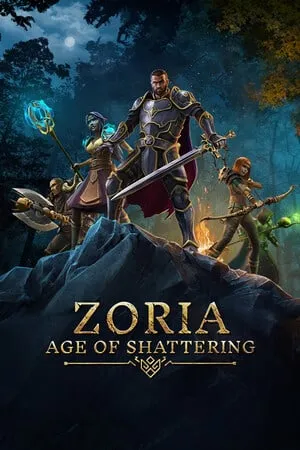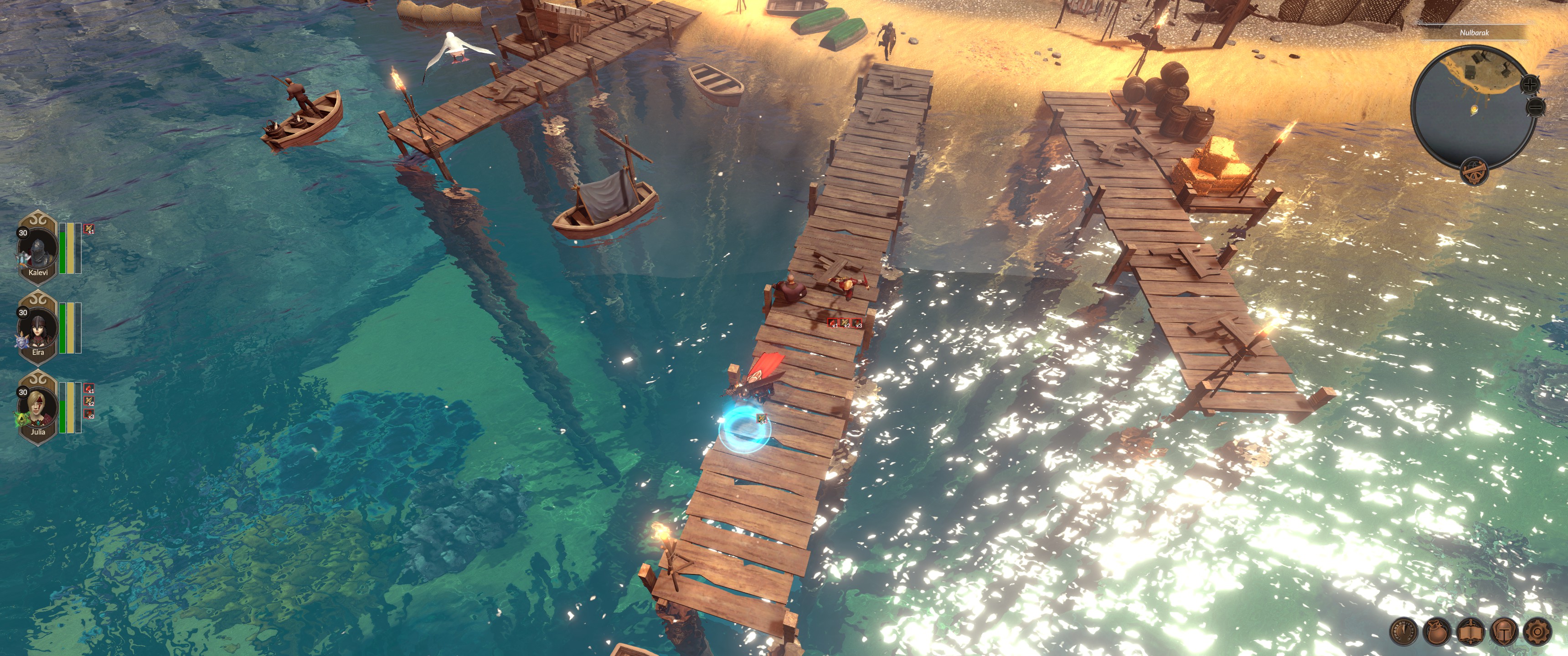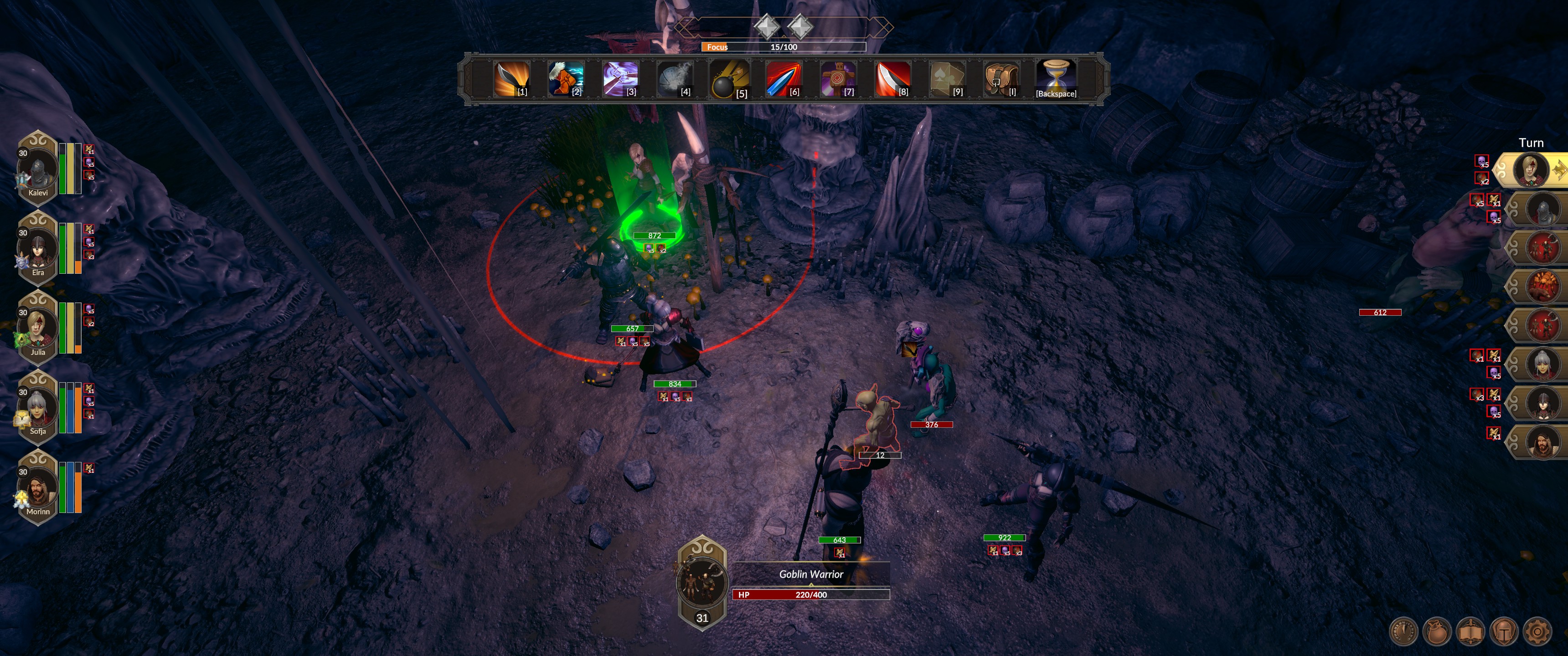Search
[{{{type}}}] {{{reason}}}
{{/data.error.root_cause}}{{{_source.title}}} {{#_source.showPrice}} {{{_source.displayPrice}}} {{/_source.showPrice}}
{{#_source.showLink}} {{/_source.showLink}} {{#_source.showDate}}{{{_source.displayDate}}}
{{/_source.showDate}}{{{_source.description}}}
{{#_source.additionalInfo}}{{#_source.additionalFields}} {{#title}} {{{label}}}: {{{title}}} {{/title}} {{/_source.additionalFields}}
{{/_source.additionalInfo}}Zoria: Age of Shattering (PC) (Preview)

Zoria: Age of Shattering
Developed By: Tiny Trinket Games
Published By: Anshar Publishing
Released: 2023
Available On: Windows, Linux
Genre: Turn-Based RPG, Tactical RPG, Strategy, Dungeon Crawler, Adventure
ESRB Rating: N/A
Number of Players: 1 offline
Price: N/A
Thank you to Anshar Publishing for the preview code!
Zoria: Age of Shattering is an isometric turn-based tactical RPG adventure game. Similar to other games in the genre, the basic premise is that you are an adventurer with a scrappy party and a grand purpose. Explore the world, meet persons of interest, take on quests, and fulfill your mission. Zoria starts by dropping you into a camp of mercenary soldiers. You and your band of soldiers are Izirians, a race particularly disliked by the local Elonians. You are told how an expedition to scope out an Elonian stronghold has gone less than optimal. One of your men was nearly fried by a magical barrier that prevents entry to every living creature except the king’s garrison, and your hopes of an easy expedition are now a distant memory. Now, you must set off to figure out what’s going on, so assemble your party and get to work!
The gameplay consists of a turn-based battle system that is automatically entered when you encounter an enemy. Your party members take their positions around you based on the formation you set at the start of the game or at your tent with the party setup totem. From here on, you have complete control to move freely around the battle space and perform moves. There are ten moves for you to choose from (one of those being a standard attack), but these will require up to three things: action points, focus, and mana/energy. Each character gets a set number of action points each turn, usually two or three. You expend points by moving around or performing moves. Trying to move far away or using a special attack or strong buff can use two points instead of one, and once you’ve expended your points, your character’s turn is over. For some moves, having action points is not enough. Some moves also require focus points, which are built up by using your character’s standard attack, as well as energy or mana, which are consumable points you must recover through items or resting. You must strategically choose when to use your standard attacks to build up focus, or buffs and shields to protect your party, or last-minute heals and potions as a final stand. Some moves also have a cooldown, and using a heal or shield too soon could spell the death of your party. It is important to note that using potions and other consumables do not take action points, and you can recover health and energy/mana by resting after battles. I wish I had realized that last point sooner, so always remember: the R is your friend.

Strong Points: Good visuals; fun and tactical gameplay; surprising amount of content for a demo
Weak Points: Only a few music tracks; some soft locks and bugs
Moral Warnings: Magic and necromancy are depicted; language such as d### and b#####ds; somewhat revealing outfits
The story, as it is now, follows several different quests and arcs that play into each other. As mentioned earlier, you are told from the start the primary plotline of this demo: a strange barrier is encircling the Elonian stronghold you are trying to penetrate. But there are also a number of side quests that feed into the main narrative. A local man who complained to the king about the garrison finds his messenger with an arrow in his back, a ghost ship with a skeleton captain and an old coot who claims to know how to eliminate him, and a series of quests involving a local militia intent on rising up against the king’s rebellious garrison. While there is little worldbuilding as it stands, the quests weave a connected narrative that establishes this small, living section of the larger world. The music that plays while in battle and exploring the world sets the mood, but I do wish there were a few extra tracks for different locations or battles, as it became repetitive by the end of my time with the game.
Despite being an indie title from a new studio, I was pleasantly surprised by the amount of visual polish put into Zoria. The environments are dense and detailed without feeling repetitious, buildings have consistent and intricate architecture both inside and out, and characters are well-modeled and appealing. The game features a dynamic lighting system that interacts with the environment casting shadows of varying intensity depending on your surroundings. Animations when walking around feel fluid, and while in a battle they can feel incredibly weighty, especially when combined with the sharp and punchy sound effects. The visual effects that appear while performing an impaling backstab or a searing fire attack add to the fantasy magic aesthetic in a way that other indie games don’t quite get right. There is a level of jank in motion typically characteristic of indie games, but I could still feel the passion behind the project making me think "it could be better, but it’s still pretty good." And speaking on the technical side, I was surprised to see that on my ultrawide monitor, the game ran flawlessly even on ultra settings! The UI scaled perfectly to the aspect ratio and I could easily hit 144FPS.

Higher is better
(10/10 is perfect)
Game Score - 74%
Gameplay - 16/20
Graphics - 8/10
Sound - 6/10
Stability - 2/5
Controls - 5/5
Morality Score - 49%
Violence – 6/10
Language - 6/10
Sexual Content – 8.5/10
Occult/Supernatural - 0/10
Cultural/Moral/Ethical - 4/10
However, I must complain about a few things. The menus are confusing and overwhelming at first, as you immediately have access to things you have no idea how to use or why you’d even use them. After five or six hours playing, I got used to the various cooking, potion, and trading menus, but I still believe some work could be done to improve the experience further, including the somewhat chaotic inventory system. After beginning the game, you exit your tent and see four people to choose from for your party. You can only take a maximum of three, so you should choose between them depending on your playstyle. All’s fine and well… except for the fact that after selecting two members to join your party, the other two not chosen walk offscreen. What you are meant to do from here is find the nearby party setup totem hidden behind a tree to add the third member, but I was not aware of this, and subsequent battles were extremely hard until I asked the developer's Discord for advice and was told I’d been essentially playing the game at 3/4 efficacy. This leads me into my final complaint: at times, the environment is almost too dense. Mountains or stairs above you can block your sight and your heroes or interactable objects can be hidden behind trees or walls. You are expected to zoom in and out and move the camera around, but I think some work could be done to make the environment clearer, especially when a later level involved vertical sections that occasionally blocked me from seeing my party. And for my final complaint, I would say it needs a bit more polish. I encountered some visual glitches or odd hiccups here and there, but more seriously I had a few soft locks that would set me back 10 to 20 minutes, so I recommend saving often.
In terms of morality, the content is as to be expected from a fantasy adventure game. Magic is a core component of the game, and necromancy and rituals are either directly shown or spoke of, with one ritual mentioned to have been taught by a witch. There is some minor swearing present in the game, such as d##n, b######ds, and the occasional combination of the two. All female party members in the game have armor that reveals cleavage but otherwise covering and appropriate, and the rest of the characters you meet are also generally well-dressed. There is blood splattering from swords slicing or spears impaling, but there is no gore.
In conclusion, Zoria was an enjoyable experience that provided me with nearly ten hours of content. A good portion of that time was spent losing battles and learning from them, which slowly made me adept at breaking the mechanics. At the start I was overwhelmed, but by the end I was engrossed in the world and the gameplay. There’s a solid base at the heart of Zoria that needs a bit more content and some polish, but I have high hopes for the final product. I’d recommend giving the demo a try—it’s free!—and I look forward to the full release of the game.








